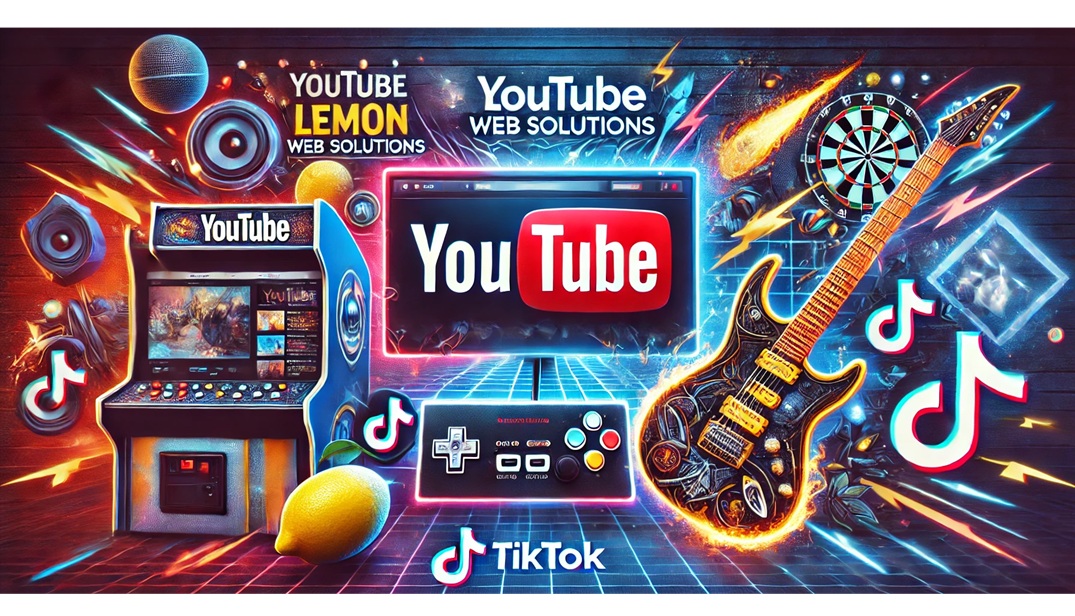LEMON BLOG
When you open your browser's DevTools and see a mysterious request like /cdn-cgi/speculation, you might wonder — what on earth is that? If you're using Cloudflare, it's not a bug or a random file someone snuck in. That little request is part of Cloudflare's Speculation Rules — a smart, behind-the-scenes optimization system that quietly makes your website feel faster and smoother to visitors.
When Donkey Kong 64 swung onto the Nintendo 64 in 1999, it was more than just a sequel — it was a full-blown evolution of the Donkey Kong Country legacy. Developed by Rare, the masters behind the SNES trilogy, this massive 3D platformer turned the jungle into an expansive world full of exploration, secrets, and laughter.
When Contra III: The Alien Wars blasted onto the Super Nintendo in 1992, it didn't just raise the bar for run-and-gun games — it blew it to pieces. Developed by Konami, this third mainline entry in the Contra series delivered pure 16-bit chaos with explosive visuals, blistering difficulty, and heart-pounding gameplay that defined the SNES action genre.
Finding the Perfect Tools for Creative Flow - It's 2025, and technology for creative professionals has evolved at an incredible pace. Yet even with AI design assistants, cloud rendering, and real-time collaboration tools at our fingertips, the gadgets we use still play a huge role in how efficiently — and comfortably — we create. For graphic designers, hardware isn't just about power anymore. It's about precision, portability, and how seamlessly each device fits into your creative rhythm.
Artificial intelligence is everywhere — from ChatGPT answering your questions to companies promising AI will transform everything from healthcare to finance. But beneath the excitement lies a growing unease. Economists, investors, and even AI's most enthusiastic supporters are beginning to wonder: are we witnessing the rise of another tech bubble, one that could rival the dot-com crash of the late 1990s?
If you've been paying the unsubsidised price of RM2.60 for RON95 even though you're eligible for BUDI95, you're not alone. After early rollout hiccups—including brief system outages—some motorists were charged the full price at the pump. The Domestic Trade and Cost of Living (KPDN) Deputy Minister, Datuk Dr Fuziah Salleh, says you can claim the difference back.
I've learned something the hard way recently — caching can be both your best friend and your worst nightmare. One day, everything on my website was lightning-fast. The next day, every single js-dos game just… died. No warning, no clues — just a cryptic WebAssembly error that sent me down the rabbit hole.
In 1993, Maxis released SimCity 2000, and the world of simulation games was never the same again. Expanding upon the groundbreaking original SimCity, this sequel delivered a deeper, richer, and more visually stunning experience — one that became the blueprint for city-building games for decades to come.
In the late 90s, the fighting game scene was dominated by giants like Tekken and Virtua Fighter. But in 1998, Dead or Alive made its PlayStation debut and instantly stood out with its explosive counter mechanics, dynamic stages, and fluid 3D animation. Developed by Team Ninja and published by Tecmo, the game brought both style and substance to the arena, cementing itself as one of the most technically refined fighters of its era.
Before Harvest Moon or Stardew Valley, there was SimFarm. Released in 1993 by Maxis, the same studio behind SimCity and SimTower, this classic DOS title gave players a charming yet surprisingly deep farming experience that captured the challenges and rewards of rural life.
When Tetris DS launched in 2006, it wasn't just another version of the world's most famous puzzle game — it was a celebration of Nintendo's history, charm, and innovation. Developed by Nintendo Software Technology, this release gave the timeless Tetris formula a dual-screen twist and wrapped it in layers of nostalgic fun that appealed to both puzzle fans and classic Nintendo lovers alike.
Released in 1997, Tomb Raider II built upon the foundation of the groundbreaking original and pushed the series to new heights — literally and figuratively. Developed by Core Design and published by Eidos Interactive, the sequel transformed Tomb Raider from a breakout success into one of the most iconic franchises of the PlayStation era.
When Tomb Raider arrived on the original PlayStation in 1996, it didn't just introduce players to Lara Croft — it changed the landscape of gaming forever. Developed by Core Design and published by Eidos Interactive, this groundbreaking action-adventure combined exploration, puzzle-solving, and cinematic storytelling in a way that few games had ever achieved.
Few games in the 90s captured the imagination of strategy fans quite like Command & Conquer: Red Alert. Released in 1996 by Westwood Studios, it wasn't just a sequel — it was a bold reimagining of history, asking one chilling question: What if World War II never happened? The result was one of the most influential real-time strategy games ever made, blending Cold War aesthetics, fast-paced battles, and brilliant storytelling into a single unforgettable experience.
When MediEvil 2 launched on the original PlayStation in 2000, fans were thrilled to see the return of one of Sony's most beloved heroes — the skeletal knight, Sir Daniel Fortesque. Building on the charm and dark humor of the 1998 original, this sequel brought new weapons, fresh environments, and a time jump that dropped players into gothic Victorian London for a brand-new undead adventure.
Few games have shaped the world of strategy gaming like Sid Meier's Civilization. Released in 1991 for DOS by MicroProse, this genre-defining masterpiece challenged players not just to win a war—but to build a civilization that would stand the test of time. Combining history, politics, science, and culture, Civilization set the foundation for a franchise that continues to captivate players more than three decades later.
When Pokémon Black and White launched on the Nintendo DS in 2010, it marked a major turning point for the series. Game Freak took bold steps to reinvent the familiar Pokémon formula — introducing an entirely new region, a full roster of never-before-seen creatures, and a narrative that carried more emotional weight than ever before.
Released in 1997 for DOS, Chasm: The Rift often flew under the radar, overshadowed by giants like DOOM, Quake, and Duke Nukem 3D. But for those who played it, Chasm stood out as a brutal, stylish, and technically impressive shooter that pushed the limits of what DOS hardware could do. Developed by Ukrainian studio Action Forms, it delivered fast-paced gunplay, gruesome enemy design, and an ambitious time-traveling storyline that made it a cult classic.
When Command & Conquer launched for DOS in 1995, it didn't just create a new kind of game — it laid the foundation for the real-time strategy (RTS) genre as we know it today. Developed by Westwood Studios, it blended resource gathering, base construction, and tactical combat into one fast-paced and addictive experience that would shape decades of strategy games to come.
When Mario & Luigi: Bowser's Inside Story released on the Nintendo DS in 2009, it instantly became one of the most creative and beloved entries in the Mario RPG series. Developed by AlphaDream, the same studio behind Superstar Saga and Partners in Time, this title pushed the boundaries of storytelling, humor, and dual-screen gameplay.
When FIFA 2005 landed on the PlayStation in 2004, it marked the end of an era. As the final FIFA title released for the original PSX, it represented everything EA Sports had learned over nearly a decade of football games — refined controls, smarter AI, and a level of polish that pushed the hardware to its limits.
When Donkey Kong Country hit the Super Nintendo in 1994, it didn't just raise the bar for platformers — it redefined what a home console game could look like. Developed by Rare and published by Nintendo, this legendary title stunned players with its cutting-edge visuals, smooth gameplay, and unforgettable soundtrack.
When Chicken Run hatched on the PlayStation in 2000, it wasn't just a movie tie-in — it was a surprisingly clever and entertaining adventure game that captured the wit and charm of the DreamWorks film. Developed by Blitz Games, Chicken Run (PSX) combined stealth, puzzle-solving, and humor into a family-friendly experience that stood out from other licensed titles of the era.
When Atari brought Breakout to the PlayStation in the late 90s, it wasn't just another arcade port — it was a full reimagining of one of gaming's earliest hits. Originally an iconic 1970s arcade title, Breakout (PSX) transformed the simple brick-breaking formula into a colorful, 3D experience while keeping the addictive gameplay that made the original a legend.
In the late 90s, not every PlayStation game was about racing or fighting — some were just about pure, casual fun. Bowling (PSX) brought that easygoing charm to the console, capturing the spirit of the bowling alley in a simple, addictive experience. It's one of those titles that reminds players how much fun can come from straightforward gameplay and a clean design.
LEMON VIDEO CHANNELS
Step into a world where web design & development, gaming & retro gaming, and guitar covers & shredding collide! Whether you're looking for expert web development insights, nostalgic arcade action, or electrifying guitar solos, this is the place for you. Now also featuring content on TikTok, we’re bringing creativity, music, and tech straight to your screen. Subscribe and join the ride—because the future is bold, fun, and full of possibilities!

Get notified when there's new article



